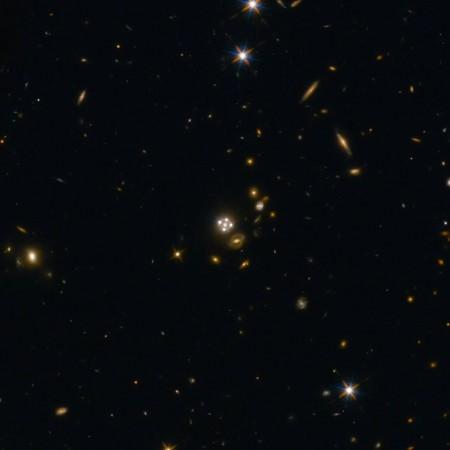
New research has revealed that our universe is expanding more swiftly than previously believed.
Also Read: NASA's NuSTAR closer to solving the mystery of the 'Chameleon Supernova'
A team of astronomers from the H0LICOW (H0 Lenses in COSMOGRAIL's Wellspring) collaborated with Sherry Suyu of the Max Planck Institute for Astrophysics, Germany to conduct the research.
They used the NASA/ESA Hubble Space Telescope, along with other telescopes, to observe five galaxies in the hope of figuring out out a specific measure of the Hubble constant.

The Hubble constant, named after the American astronomer Edwin Hubble, refers to a unit of measurement used to calculate the growth rate of the universe.
"The Hubble constant is crucial for modern astronomy as it can help confirm or refute whether our picture of the universe — composed of dark energy, dark matter and normal matter — is actually correct, or if we are missing something fundamental," Suyu stated.
The new expansion rate of the universe is found to be 71.9 kilometers (44.7 miles) per second per megaparsec (1 megaparsec = 3.26 million light-years).
This is quite a bit faster than the rate calculated in 2015 by the European Space Agency's (ESA's) Planck satellite mission, which put it at 66.9 km (41.6 miles) per second per megaparsec.
Scientists analysed enormous galaxies present between Earth and extremely radiant galaxy cores known as quasars. The researchers scaled the way light bends around far-off galaxies and came to the conclusion that our universe is expanding at a much faster pace than previously believed.
The light emitted from quasars, situated farther away, was found to bend more near enormous masses of galaxies; an outcome of gravitational lensing.
The data accumulated in a 2016 study, using the Hubble Space Telescope, led to one of the most precise Hubble constants till date.
But the new Hubble constant calculations made by Hubble, do not match ESA's Planck satellite calculations which points towards two possibilities: The new calculations are wrong, or the impact of new physics is different from the Standard Model followed before.
A difference was also found in the way ESA's Planck satellite calculated the Hubble constant for the early universe in comparison with the way the new measurements were carried out.
The Planck satellite detected Cosmic Microwave Background (CMB), or the leftover thermal radiation from the Big Bang.
"The expansion rate of the Universe is now starting to be measured in different ways with such high precision that actual discrepancies may possibly point towards new physics beyond our current knowledge of the Universe," Suyu explained.
The universe's apocalyptic expansion
According to a paper published in the Annual Review of Astronomy and Astrophysics, 2008, the authors state that the universe's expansion has been accelerating since the universe entered its dark energy-dominated phase.
In Barbara Ryden's Introduction to Cosmology, Ryden claims that eventually the universe will expand to such an extent that the density of baryonic matter will decline considerably but the density of dark enery will remain unchanged.
This will continue until the universe is about 50 times its current age during which time the CBR will redshift to lower wavelengths until it is invisible to any observer. All traces of the Big Bang will then disappear, and we will aproach de Sittier Space.
Needless, to say, it's highly unlikely that any baryonic matter will survive by that time, and the universe could comprise only beings composed of dark matter and dark energy.
The shift in the luminosity of the quasar near large galaxy clusters helped astronomers calculate the Hubble constant, revealing the pace at which galaxies are shifting away from us.
"Our method is the most simple and direct way to measure the Hubble constant, as it only uses geometry and General Relativity, no other assumptions," co-lead researcher Frédéric Courbin elucidated.
In order to lower the error margin, the team will conduct the same experiment and analyse around 100 quasars to decide if their Hubble constant maintains consistency.
"If you still see something when the error bars shrink, maybe it's new physics, beyond the Standard Model of cosmology," Chris Fassnacht a team member from the University of California, Davis stated, said in a press release.
This research has been published in the Monthly Notices of the Royal Astronomical Society.

















